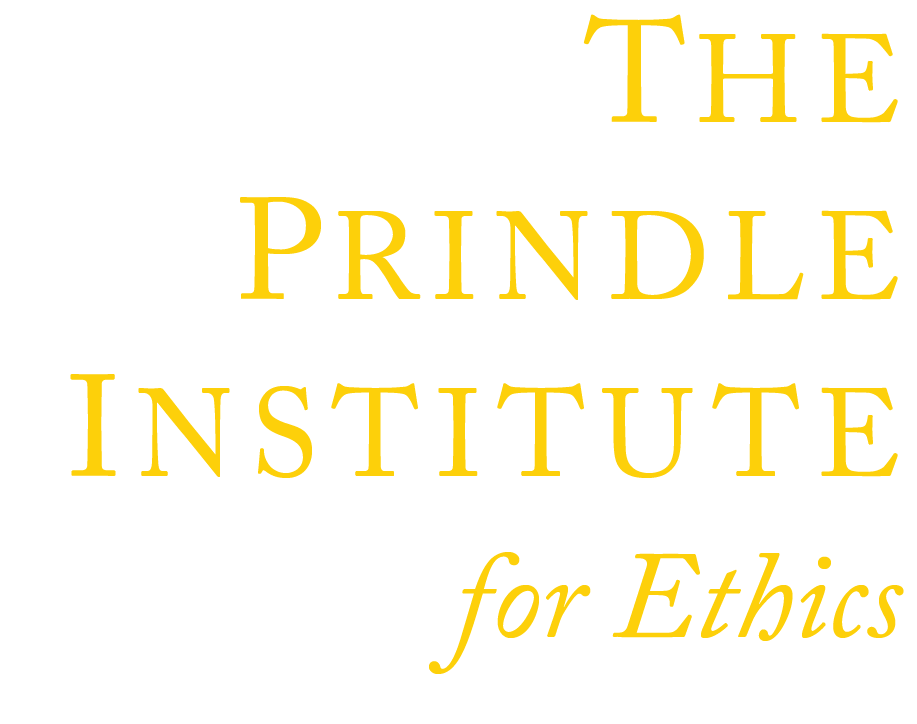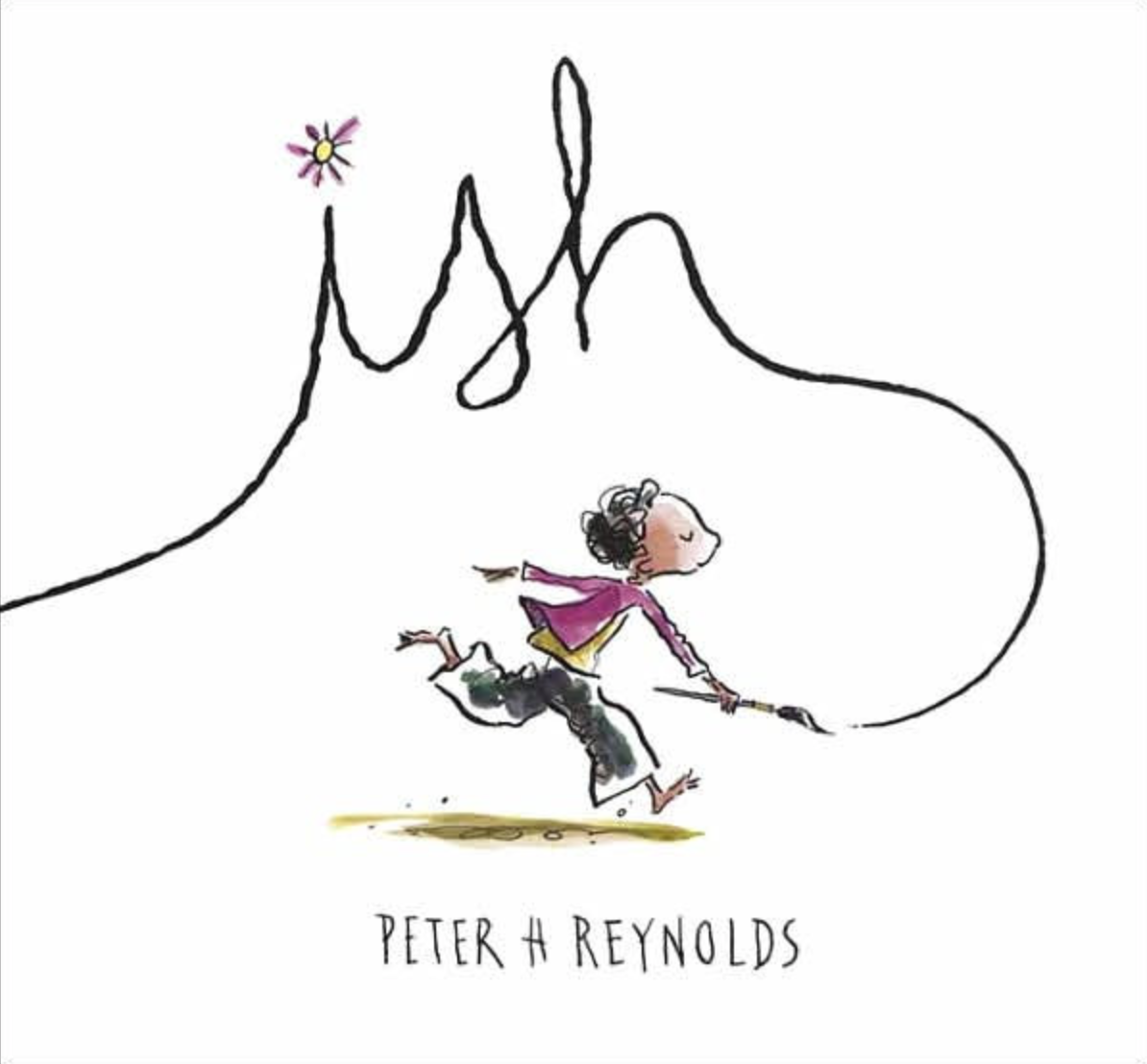Ish
Book Module Navigation
Summary
Ish asks us to consider the proper motivations for making art and whether realism is all that important.
Ramon takes complete delight in drawing “anytime, anything, anywhere.” But his pleasure suddenly turns into frustration and shame when his older brother Leon points and laughs at Ramon’s drawing of a vase of flowers. From this moment, Ramon attempts to make his drawings “look right” and loses all enjoyment in the process, eventually giving up in anger. However, Ramon’s attitude toward his artwork changes again when he finds that his younger sister Marisol had been sneaking his crumpled drawings into her room and hanging them on her wall.
Read aloud video by SnuggleBug Story Time
Guidelines for Philosophical Discussion
Ish by Peter H. Reynolds illustrates the transformation of a young boy’s relationship with his art and his outlook on life. The philosophical topic central to the story is the concept of perfection both as it relates to realism in art and the nature of perfection as a worthy motivation or achievable goal. The main character’s primary pursuit is artistic expression, and therefore the philosophical field of aesthetics may be introduced and discussed.
The first question set seeks to introduce the concept of perfection in relation to art and asks the students to think about what Ramon was attempting to do when he wanted to make his drawings “look right” in response to his brother’s laughter at one of his drawings. Was Ramon striving for perfection? Was Ramon seeking his brother’s approval? Was he simply practicing to improve his skills? The set then continues and asks directly whether the students like certain drawings or art that does not “look right.” This is a wonderful opportunity to introduce examples of art from different periods to initiate and enliven the discussion. This question deals with realism in art and whether realism is necessary for art to be considered “good”. An aspect of aesthetics is the attempt to answer whether beauty can be defined objectively or is always purely a subjective matter. The intent is to have the students think about why they prefer or dislike particular works of art and begin to develop their own artistic criteria.
The second question set juxtaposes improvement and perfection and essentially asks the students to define each. Does perfection denote completeness, excellence, or that there is nothing better of its kind? It also asks the students to think about whether improvement and perfection are the same, how they may differ, or how they are enmeshed. The tension in this set rests in whether things that are considered perfect can be improved upon. The notion of perfection has long been debated in philosophical and religious circles. Some philosophers believe that the only perfection is imperfection, while others believe that perfection is achievable by humankind, and still others believe that God is the only being capable of perfection.
The third question set addresses enjoyment as motivation. There are two points in Ish where Ramon takes complete delight in making his art and one point where his enjoyment suddenly evaporates. The first question asks how Ramon was impacted by his brother’s and sister’s reactions to his work and whether his connection to his art changed as a result. A flow chart would be helpful for the students to see the relationships between what Ramon’s siblings said, how Ramon felt, and then what actions he took in response to his feelings. This could instigate a discussion about cause and effect and whether we can consider our emotions to be motivating factors. Is reacting to our emotions the same as responding? Do the comments Ramon’s siblings make cause him to behave a certain way? This question set explores ethical considerations such as why human beings proceed with their activities, what are “good” or “appropriate” reasons for our actions, and how we are influenced by our emotions.
The fourth set involves questions concerning criticism and further explores the role of emotions in the creative process. The first two questions are designed to have the students step into Ramon’s place–how would they respond to positive or negative comments and how would such comments affect their relationship to their art? Here, they are asked if particular emotions impact the creative process–whether the result of making art is influenced by one’s emotional state while they are creating. Can artists create a piece that looks happy if they are feeling sad? It may be helpful to refer to the page in the book that displays Ramon’s drawings of his feelings.
The last question set explores goals and returns to the nature of perfection. The students are invited to think about whether they enjoy doing something that they believe (or others think) they are not very good at. Does it matter if artists receive praise or criticism? Is the fact that they like their own work enough? The next question follows by asking if things are worth doing if perfection cannot be attained, which should elicit other intentions aside from perfection. Is it important to think about why you do something? Should you judge your goals, and if so, how do you decide what is a “good” goal?
Questions for Philosophical Discussion
Realism in art
“Ramon kept trying to make his drawings look right.”
- What was Ramon trying to do? What do you think “look right” means?
- Are there some drawings or pieces of art that you like that don’t “look right”?
- Does art have to “look right” (look exactly like the object the person is trying to draw, paint, sculpt) for it to be considered “good”?
Perfection and improvement
- Do you ever feel like you have to make or do things that are perfect?
- Are you ever done improving something that you want to be better? Why or why not?
- Can something that is considered perfect be improved? Why or why not? Give examples.
Enjoyment as motivation
- What impact did Ramon’s brother and sister have on his enjoyment of making his drawings?
- Do you ever do things you do not enjoy? Give examples.
- Is something worth doing if you don’t enjoy yourself? Why or why not? What are some other reasons you might do something aside from the enjoyment it gives you?
Emotion and creativity
- What feelings do you think Ramon had while he was trying to make his drawings “look right” after his brother laughed at him?
- How would you feel and if someone made a negative comment about your art? A positive comment? How would this affect how you make your art?
- Is making art when you are feeling angry or sad the same as making art when you are feeling silly or happy? Why or why not?
Goals of doing
“Leon burst out laughing. ‘What is that?’ he asked.”
- Is there anything you enjoy doing that either you or other people don’t think you are very good at?
- Is something worth doing if you cannot be perfect at it?
- Is it a good goal for someone who loves to draw to try and make their drawings “look right” or perfect? Why or why not?
Original questions and guidelines for philosophical discussion by Karen Grossi. Edited June 2020 by The Janet Prindle Institute for Ethics.
Find tips for leading a philosophical discussion on our Resources page.






